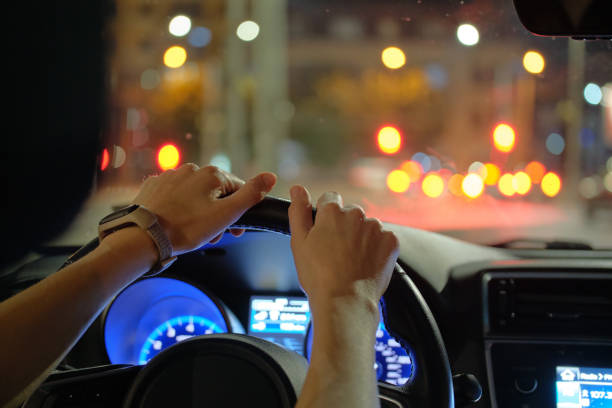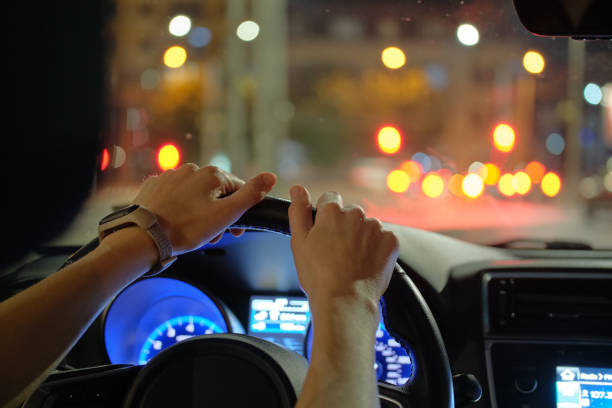A mere 17km stretch of motorway in Germany could hold the answer to one of the transport sector’s biggest global headaches: how to clean up the carbon emissions and air quality on our road networks. That is according to the project team from Costain and Siemens Mobility which has implemented an electric road system (ERS) as part of a trial commissioned by Autobahn des Bundes – the German equivalent of National Highways. The ERS repurposes overhead catenary technology from railways to power specially adapted heavy goods vehicles (HGVs) and charge their batteries as they travel along the A5 motorway. The 445km A5 motorway stretches from the Germany-Switzerland border near Basel to the Hattenbach Triangle Intersection near Kirchheim. It carries 135,000 vehicles daily, including 14,000 HGVs and is one of the busiest and most heavily polluted roads in Germany. A section of this route has been used to test the ERS since July 2020.

Ten kilometres of The Near-side Lane of the A5 South of Frankfurt.
has been electrified – 5km in each direction. An additional 7km – all of it in the direction of Darmstadt – is currently being installed for the second phase of the trial.This technology is here and if you wanted you could electrify the whole road network from tomorrow The ERS has three main components: an overhead catenary system and cables; ERS-enabled HGVs and charging points. The overhead catenary system comprises support columns, anchors, tensioning poles and feed-in masts. The columns are 12.7m to 14.3m tall and are installed at approximately 50m intervals along the side of the motorway to support the catenary system. They are made from coated steel and are supported by a 2m driven foundation. The average cable height is 5.1m above the road’s surface and cables carry a DC current of 670V. The cables are attached to a series of cantilevered arms which are attached about two-thirds of the way up each column. The power comes from the grid via two feed-in substations. An ERS HGV is fitted with a lithium battery used in small electric trucks. They also have pantographs, similar to those used on electrified trains or trolley buses. The overhead cables power the HGVs while they are on the ERS. They also charge their batteries so that they can keep going when they leave it.
Dynamically Charged Batteries
The ERS HGV’s battery is dynamically charged by connecting via the pantograph to an overhead cable installed on the nearside lane of a motorway. The pantograph is raised to touch the cables when the driver presses a button inside the cab. It automatically detects when the section of overhead wires is coming to an end and lowers itself. This is a major benefit for electrifying a longer stretch of road or an entire motorway. It means overhead cables are not needed along the entire motorway and gaps could be left for low bridges or tunnels, for example, although not ideal. Equally if a driver decides to move out of the inside lane to overtake or come off at a junction, then the pantograph can automatically lower itself once the indicator is switched on or the truck moves to one side. The on-road system is supported by a network of strategically placed charging points at depots and logistics hubs, so the ERS HGV can also be charged while being loaded or out of service. The trial has been deemed a roaring success by the Autobahn des Bundes as the electric trucks have been powered as expected. It is now being expanded to test the charging capacity over a longer stretch of motorway. The additional 7km of overhead catenary cables currently being added to the A5 motorway in Hessen, bring the total to 12km in the direction of Darmstadt and 5km towards Frankfurt. The extension is expected to be operational by spring next year.
The Long term Aspiration.
of the project team is for the A5 to be fully fitted with the ERS. For future projects, the team is looking into increasing the maximum voltage carried by the wires to 1200V to charge the batteries more efficiently. The A5 scheme is one of three trials being conducted in Germany by the same project team. A 5km test track has opened near Lübeck in Schleswig-Holstein (A1), there is also a 4km section of the B462 in Baden-Württemberg. In total 22 HGVs are in operation on these three test tracks.

UK Trial Over the Last year
, the Electric Road Consortium – comprising Costain, Siemens Mobility and the Centre for Sustainable Road Freight – has carried out a feasibility study into installing an ERS in the UK. HGVs make up less than 6% of all road movements in the UK, 0but account for 19% of all road transport emissions. Fully electrifying the UK’s HGV fleet would therefore cut around 18.6M.t of CO2 from the atmosphere every year. The consortium has held talks with the Department for Transport (DfT) and National Highways about carrying out a trial on the M180 in the Humber region and representatives from both organisations recently visited the Frankfurt trial. The proposed UK trial involves installing the ERS on two 10km sections of the M180. UK regulations mean that some additional challenges will have to be overcome. As well as needing to meet safety standards set by National Highways and the emergency services, the ERS consortium will also have to develop a solution to deal with the fact that the allowable height of HGVs beneath bridges in the UK is 450mm greater than in Europe. This leaves a smaller space to incorporate the overhead electrification cables. While the vehicle can lower and raise its pantograph to clear certain structures, the consortium is keen to keep this to a minimum to ensure maximum charging time. Costain believes it would cost between £20bn and £30bn to electrify the whole of the UK’s 5,500km strategic road network. Doing so is estimated to reduce the UK’s total greenhouse gas emissions by between 5% and 7%, which is up to 29.7M.tCO2e. A decision on whether or not to take the M180 trial forward will ultimately be taken by politicians. But those in charge of the Frankfurt trial are ready to get going should they receive the green light This technology is here and if you wanted you could electrify the whole road network from tomorrow,” Costain chief digital officer Matthew Higham said. “It is not a silver bullet, but it is a solution that is here and ready now.”


Recent Comments